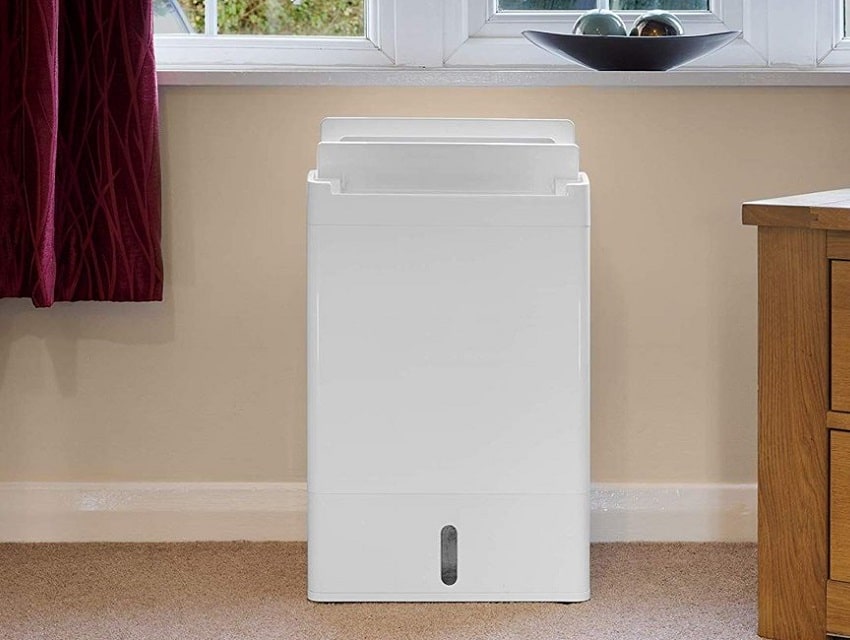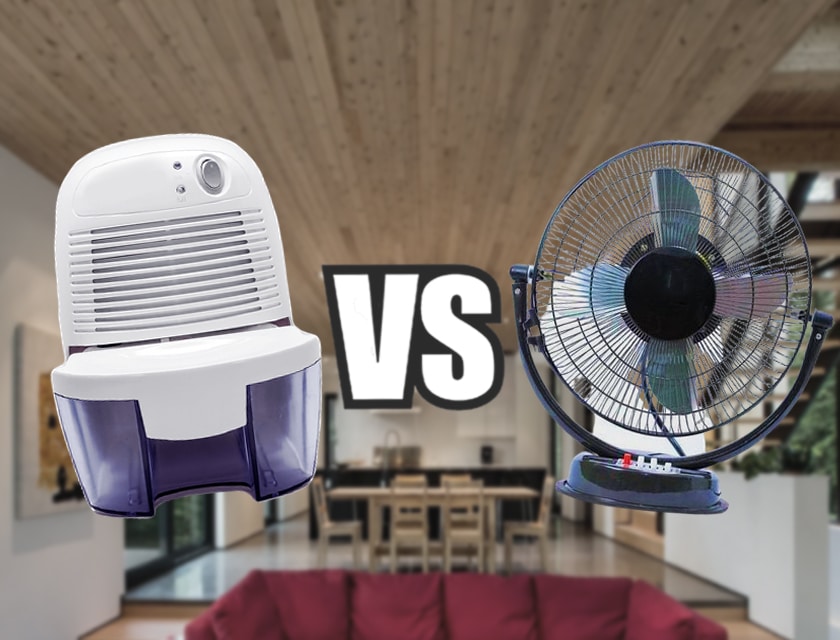Humidity, or the presence of a certain amount of water (or water vapor) in the air, is present throughout the different seasons of the year. It influences, among other things, our perception of warmth and freshness.
Knowing when to use a dehumidifier depends on your climate and region. In winter, when the high humidity is added to the already low temperatures, the cold is perceived even more intensely by our body.
In summer, contrary to people’s opinion (due to the hotter climate), warm summer air contains more humidity than in winter. This is why Dr. Marshall Shepherd, the director of the Atmospheric Sciences Program at the University of Georgia, feels Trusted Source Deadly heat waves to become more common | CNN Deadly heat waves are becoming more common due to climate change, with three out of four people being affected by potentially lethal heat by 2100. www.cnn.com ”
Many also wonder if and how to use a dehumidifier during winter and fall, to reduce the feeling of cold in the house, as well as to stay in a healthier and more liveable environment. Can the dehumidifier be effective in all seasons? We’ll try to find out in this article.
The best time to use a dehumidifier is specifically when your humidistat indicates that humidity level in the home has fallen below the optimal range, that is, 40 to 60 percent Trusted Source Humidity and Sleep: Optimize Your Sleep Environment | Sleep Foundation Do you have a hard time sleeping in humid climates? Our guide discusses the best humidity for sleeping and shares tips for resting comfortably on damp nights. www.sleepfoundation.org , according to the Sleep Foundation. However, generally speaking, a dehumidifier is useful in winter, summer, fall, and spring. We’ll explain why.
Without going into too much scientific explanation, we know that at the same temperature, in winter, humid air is perceived as cooler than dry air. The reason this happens is due to a physical phenomenon called thermal conduction, where the more humid the air around us, the more heat is removed from our bodies, which cools down faster than in low humidity conditions.
Using a dehumidifier during the winter months can help make the environment in which you live or work more pleasant. It reduces the feeling of perceived cold, although this tool does not cause considerable temperature variations. However, the dehumidifier can change it up to a degree or two.
Let’s see how the dehumidifier works and what benefits it can bring.
Unlike a fan coil, for example, a dehumidifier is not a device designed to increase the temperature inside a room, but rather to remove humidity, to “dry” the air.
As we have seen, the drier air that we will get by using the dehumidifier withdraws less heat from our body, alleviating the feeling of cold due to heat conduction.
The purpose of using a dehumidifier in winter is therefore to make the rooms in which it is used drier, which has the effect of reducing the feeling of cold.
There is nothing better than good, fresh, and clean laundry. But in the winter, drying clothes can become a complex challenge for several reasons. First of all, especially in colder areas or where the rains are frequent and abundant, drying the laundry is not an easy task, as there is no possibility of exposing it to the open air. (which would however be freezing!).
Whether you have the option of using a laundry room dedicated solely to drying laundry, or whether you need to place laundry in the living room, bathroom, or other rooms, you will always have the same effect: humidity in the room. Humidity will increase because the clothes are soaked in water which, by evaporating on drying, increases the humidity of the air.
To overcome these problems, you can get a bathroom dehumidifier that can extract moisture from the air and, therefore, from your damp clothes. Some models also have a special function dedicated to the quick drying of the laundry, which makes the operation even faster.
There is more humidity in the warm summer air. The dehumidifier is useful for lowering the humidity in both the winter and summer climates. These devices help to ensure that the heat is not so sticky in summer, as it condenses the humidity.
Thus, the humidity contained in the air is concentrated in the form of water and is accumulated in the condensation tray of the equipment. The summer is usually when you need a whole-house dehumidifier the most because of the increase in humidity.
In hot and humid climates, these equipment installed in homes, commercial premises, and industries extract excess moisture. They also automatically maintain the humidity percentage.
There is increased air pollution in summer than in winter. Most dehumidifiers on the market are equipped with a filter for air purification. Keeping a dehumidifier running in the summer helps filter the air you breathe, thereby removing dust and allergens.
Also, you have to know that molds proliferate in humid environments and that the use of a dehumidifier considerably counteracts their development.
Rainy spring is characterized by oversaturated ground, resulting in high humidity in homes. And this could be a problem for allergy-prone people.
The dehumidifiers equipped with purifiers are great for fighting against allergies in spring.
These allergies involve a considerable deterioration in the quality of life for people who suffer from them, which often leads to other problems such as persistent asthma.
The dehumidifier with a purifier is the best option for alleviating excessive humidity and polluted air – a two in one solution. It reduces relative humidity at the same time. In this case, the humidity level should be between 40% and 60% humidity.
When the trees lose their green color and take on that beautiful yellow color, it’s time to get ready for winter. Fall is the season of long rainy nights, the smell of mud, but also high humidity, damp walls, and ceilings.
When you live in a humid climate, you are surrounded by several allergy triggers, namely dust mites, dust, molds, etc. If you find that the symptoms are getting worse, a good dehumidifier can help you counteract the situation.
Dehumidifiers eliminate the odor that accompanies mold in your home in the fall. These devices reduce the possibility of mold growth on your fabrics and woodwork. They thus extend the life of your clothes and your furniture.
They protect your household appliances as well as your computers and telephones… etc. against rust or corrosion. Also, your food (breads, cereals) will stay fresh for a long time. For protecting foods in the kitchen storage cabinets, a desiccant or small dehumidifier is all you need.
Below are some of the signs that you need a dehumidifier
There are no hard and fast rules about how much a unit should operate each day. Some dehumidifiers stop when humidity is low and start when it is high.
If the device never turns off, then there may be excessive humidity that it can remove. In other words, the dehumidifier is designed to remove a specific amount and you can never exceed it.
Some models like the Vremi 22 Pint 1,500 Sq. Ft. Dehumidifier run 24-hour cycles, stopping automatically when the tank is full. This model is ideal for the bedrooms, basement, and bathroom.
There are some models with built-in humidity and temperature sensors. One of the best dehumidifiers with built-in humidistats is the TaoTronics Dehumidifier with Pump 50 Pint. Ideal for the living room and spaces of up to 4500 square feet, this model automatically starts when the humidity goes beyond 55 percent and stops when it reduces it to 45 percent.
In many cases, humidity levels of around 30 to 50 percent are adequate. Any level below or above these could cause problems for the house or the inhabitants. High levels of humidity can turn out a ground for breeding mildew and mold.
So, when is the best time to use a dehumidifier? An air dehumidifier is especially useful in winter and summer. During the cold winter, an air dehumidifier will help you have efficient heating and drying. Unlike hot air, cold air absorbs less moisture.
This is why summer is the best period of the year to have a dehumidifier. In summer, the air dehumidifier helps fight the effects of pollution. Cigarette smoke and particles from cleaning products are more suffocating when the air is dry.
Also, dry air tends to make dust more volatile. These conditions affect the respiratory tract and mucous membranes. Dry air also tends to absorb whatever moisture is present. The summertime is therefore when to use a dehumidifier.
However, the use of an air dehumidifier is not limited to these seasons. It is quite possible and effective in autumn and spring. However, you should avoid decreasing the humidity level below 40 percent. A low rate is also bad. Be sure to have a humidity level between 40% and 60%.





